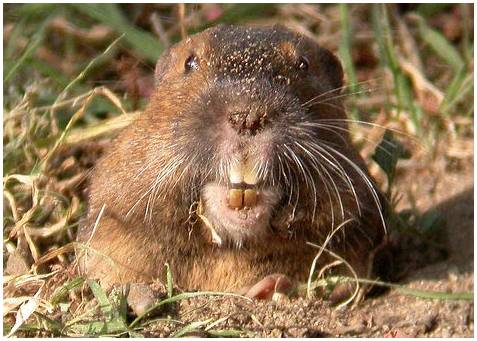Call on Custom Pest Solutions to get rid of these pesky yard destroyers. Pocket gophers are rat-sized, tube-shaped animals, rarely seen on the surface. If they do surface, often people may mistake these pests for rats. Adapted for a life underground, they have huge, orange-colored incisors, enlarged front feet with long claws, a short naked tail, and tiny eyes and ears.
Appearance:
Pocket gophers are beautifully adapted for life underground. These chestnut-colored rodents have small ears and eyes, and can chew and dig their way through compacted soil and roots with the help of large, incisor teeth and long, curved claws on enlarged forelimbs. The lips close behind the front teeth, which prevents dirt from entering the mouth. The "pocket" part of their common name refers to two fur-lined cheek pockets or pouches, which have external openings on either side of the mouth. The pouches are used to transport food and nest material.
Habitat:
Look for evidence of gophers in deep sandy soils in open longleaf pine/turkey oak sandhill habitats and in coastal strand, sand pine scrub, and upland hammocks. The mounds are especially noticeable in grassy fields, pastures, lawns, golf courses and other open areas.
Behavior:
Pocket gophers are only 10-12 inches long from nose to tip of tail but they are capable of digging tunnel systems that may extend for 500 feet or more, although 145 feet is the norm. As they dig, they push piles of loose dirt to the surface, a characteristic that has earned them the name "sandy mounders" or "salamanders." Shallow tunnels generally run parallel to the surface and provide access to their diet of roots and tubers, while nest and food storage tunnels are deeper. Pocket gophers plug tunnel openings to prevent snakes and other predators from entering. Pocket gophers are solitary animals and, except for females nursing young, do not share a tunnel system.


